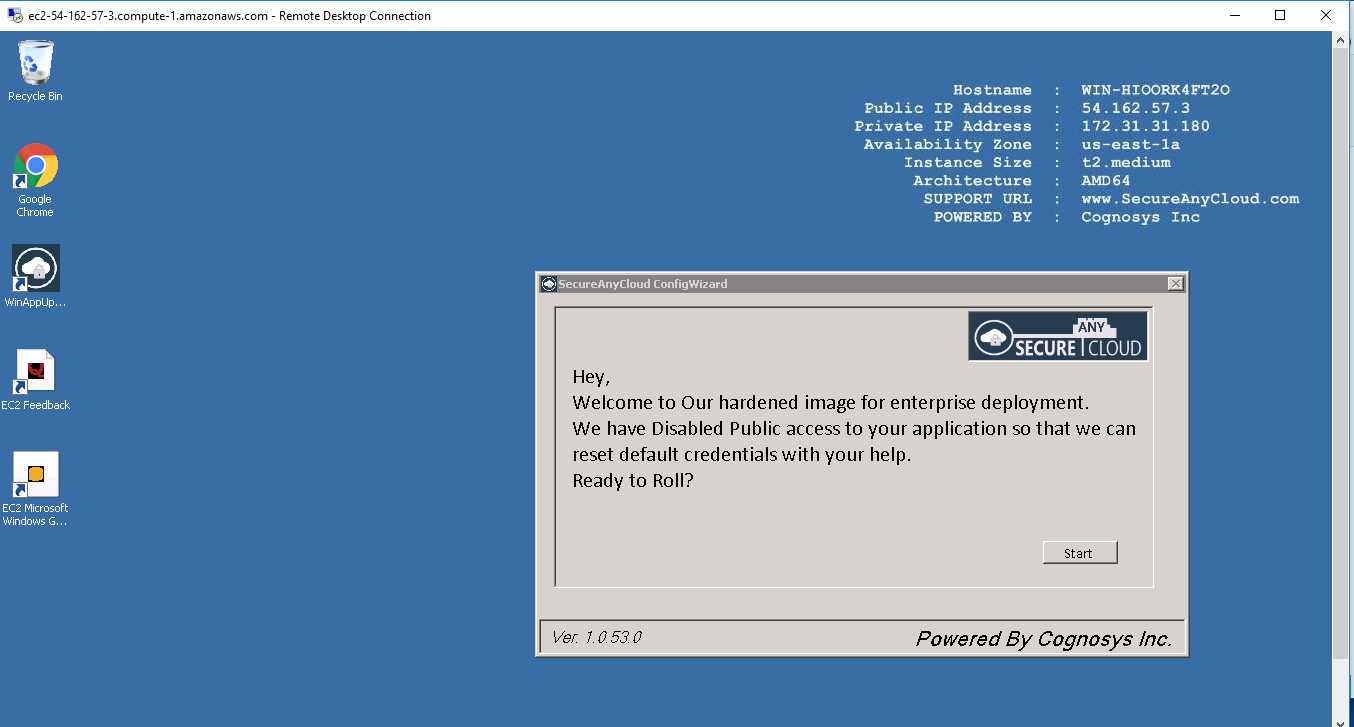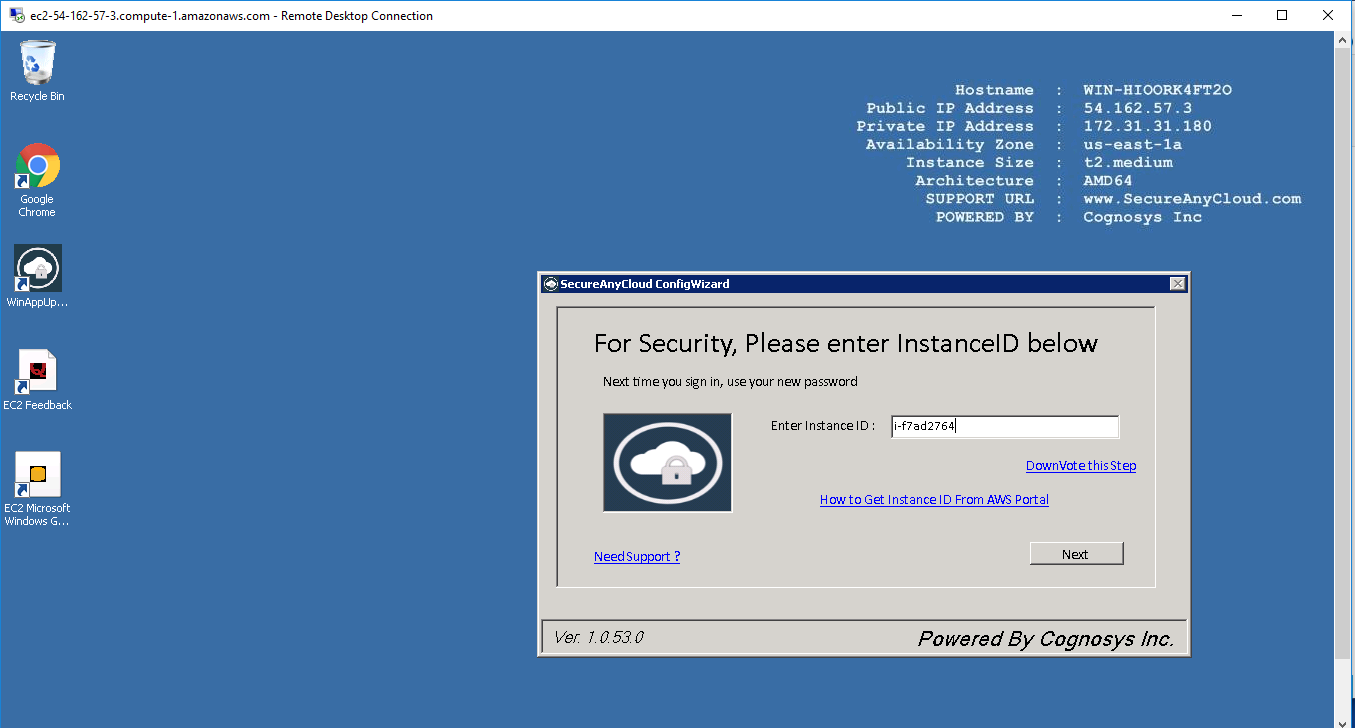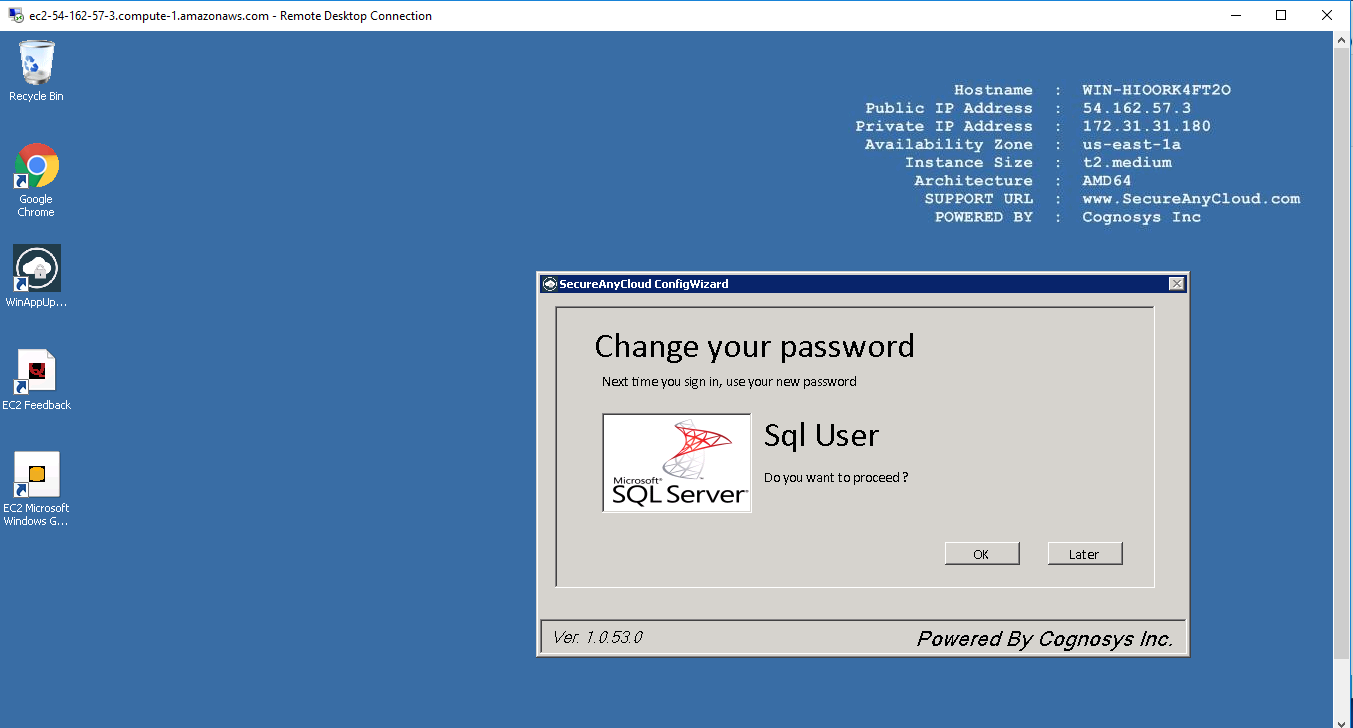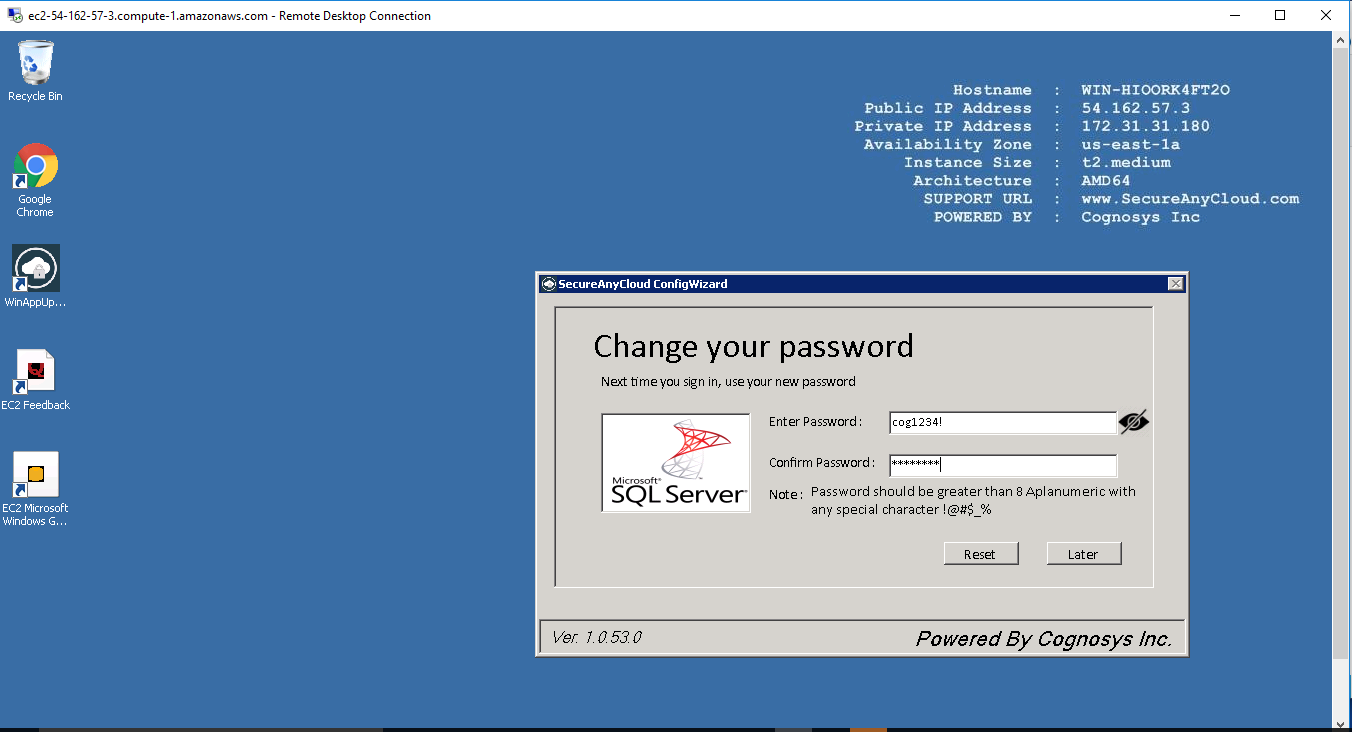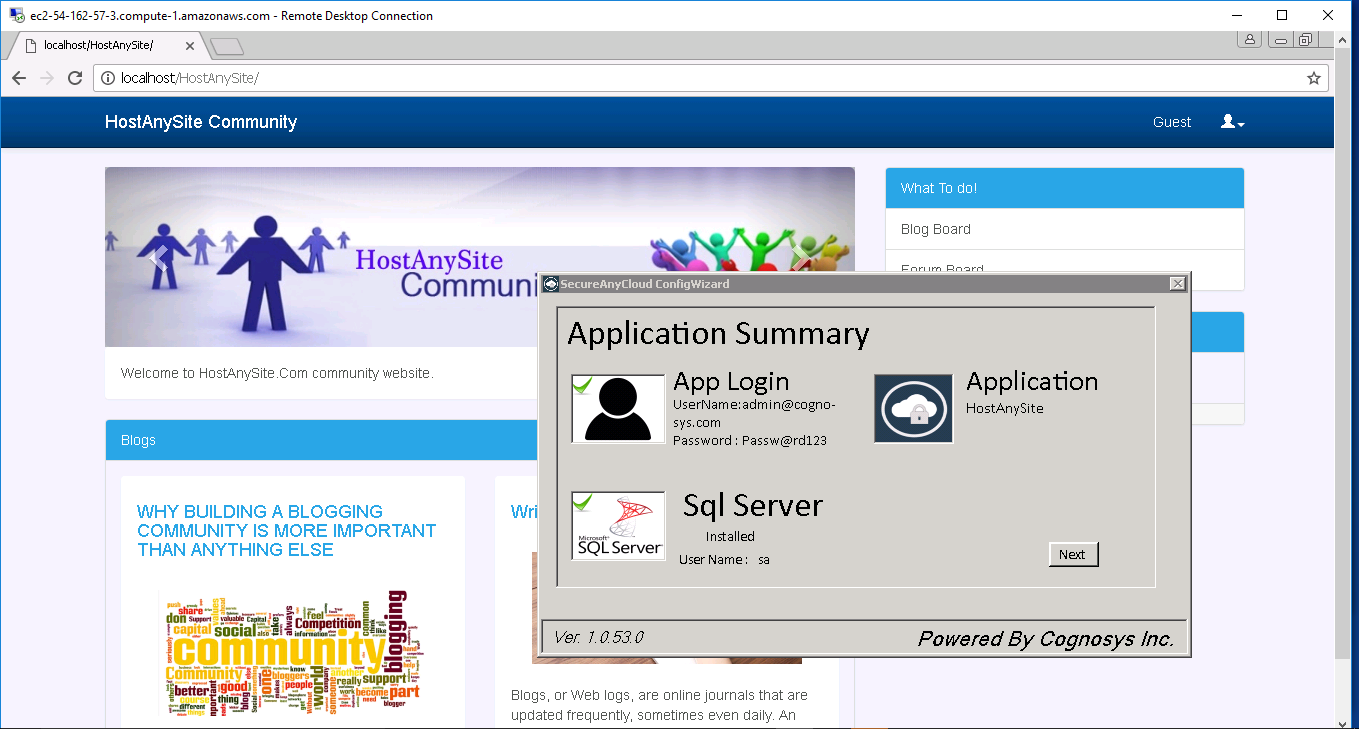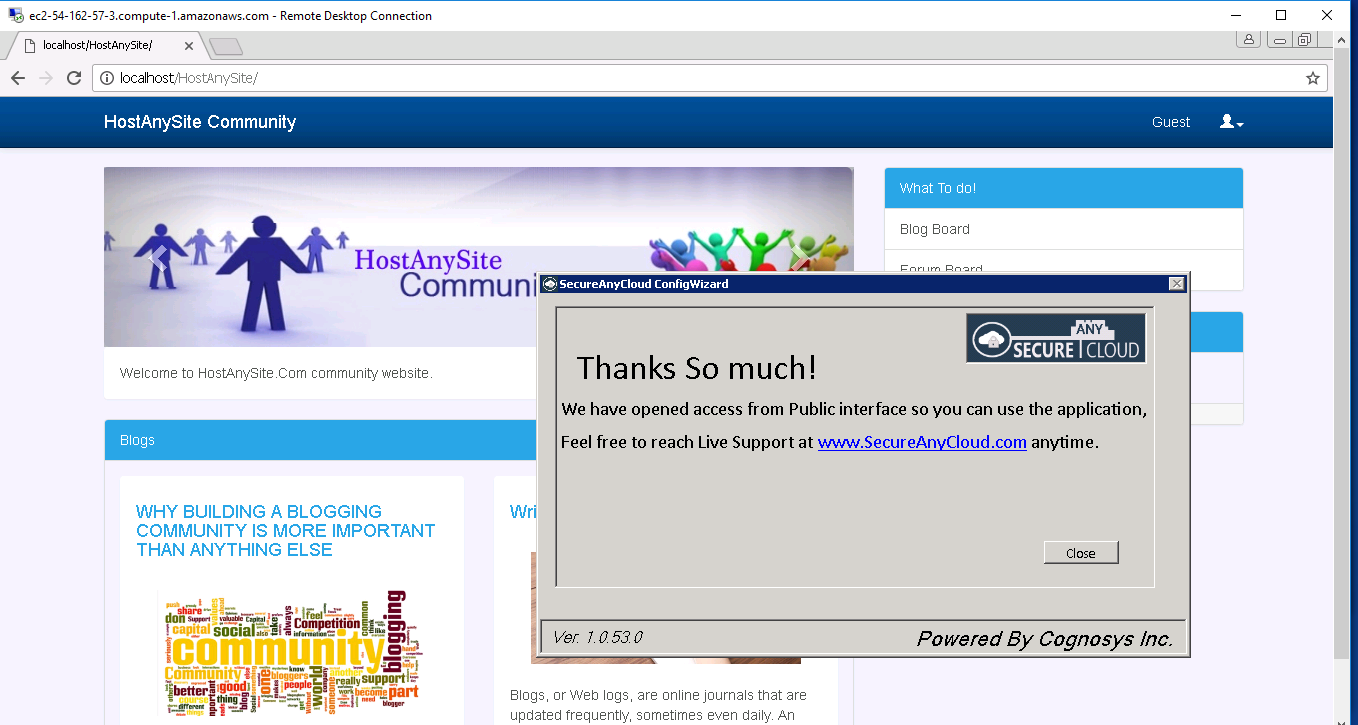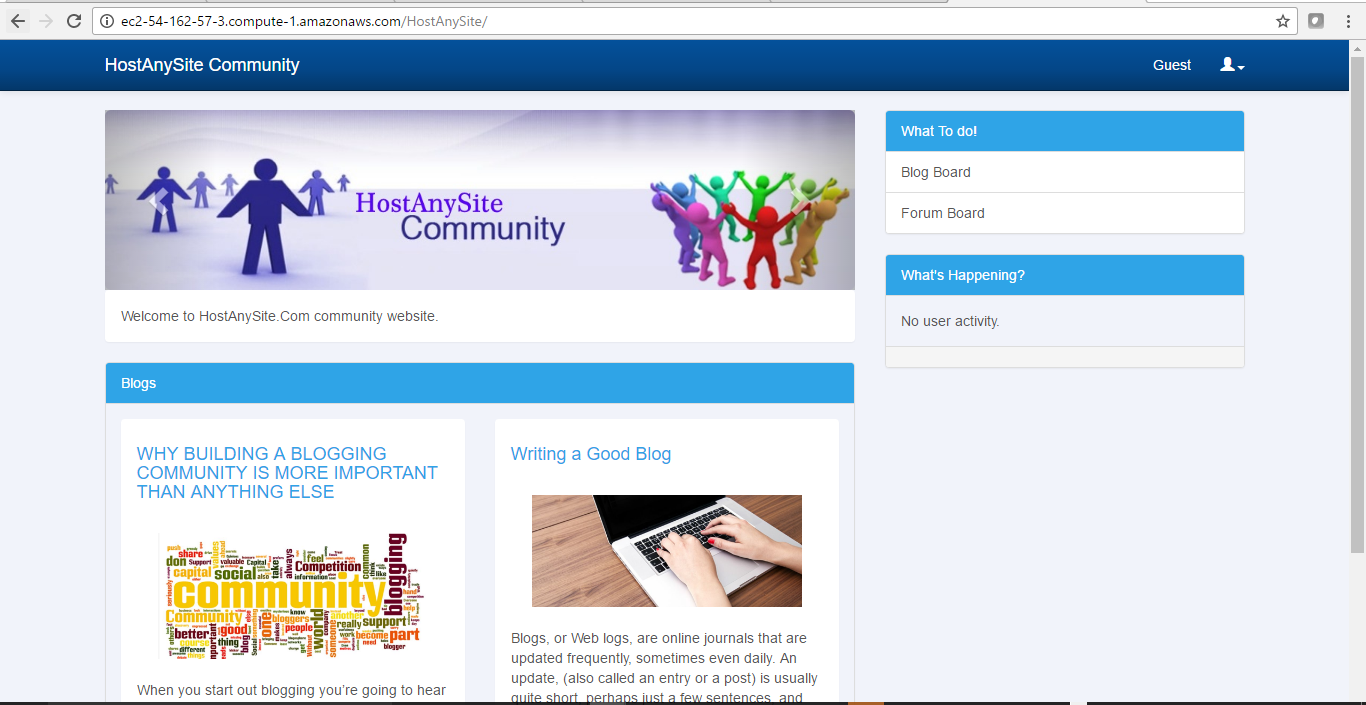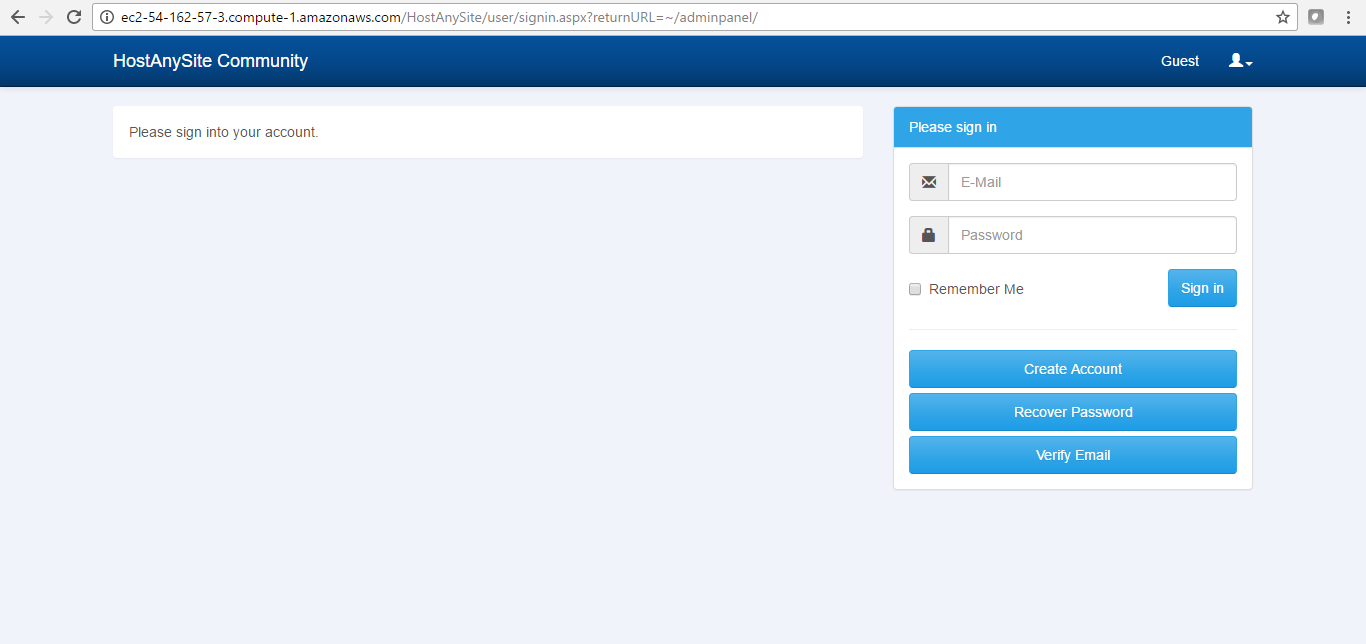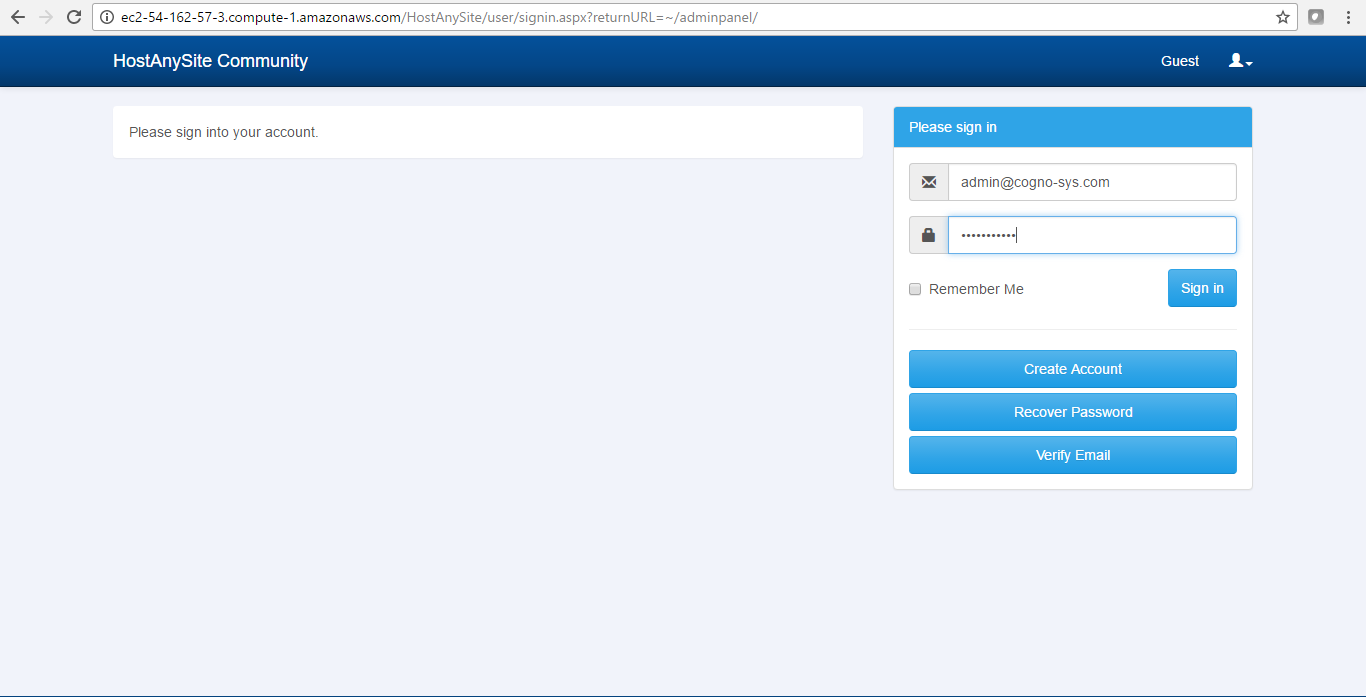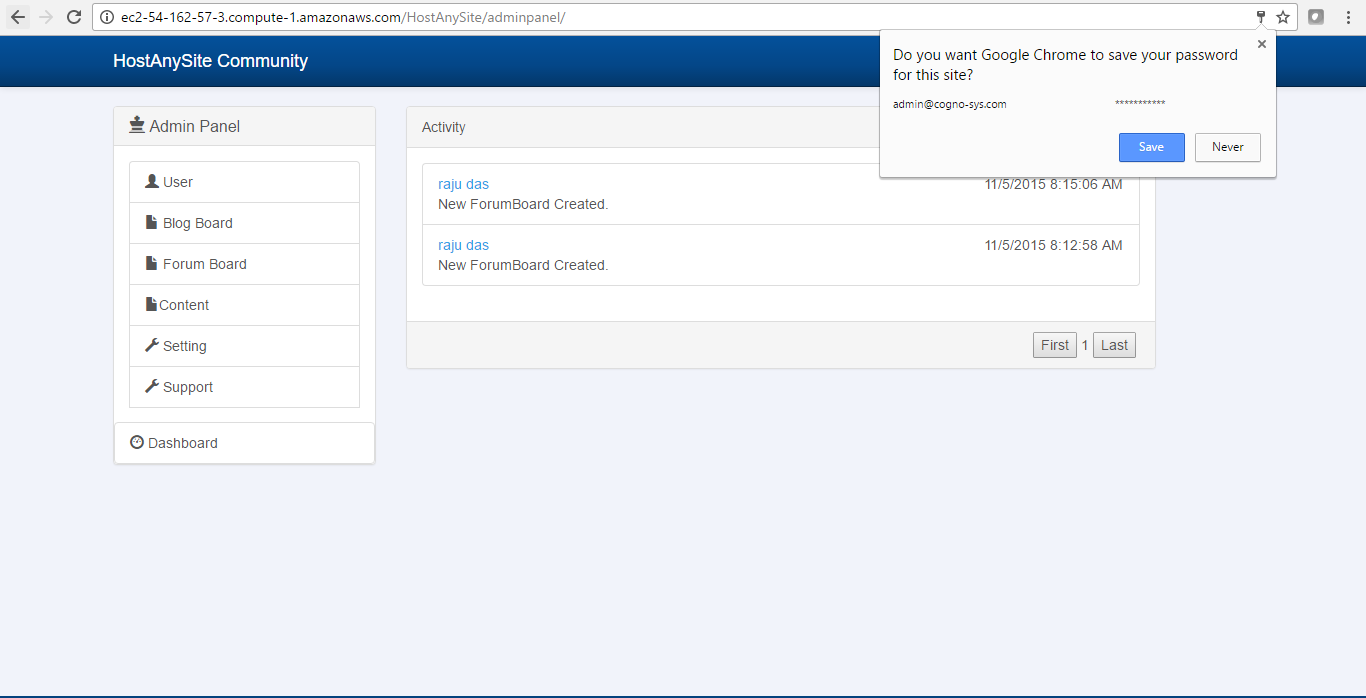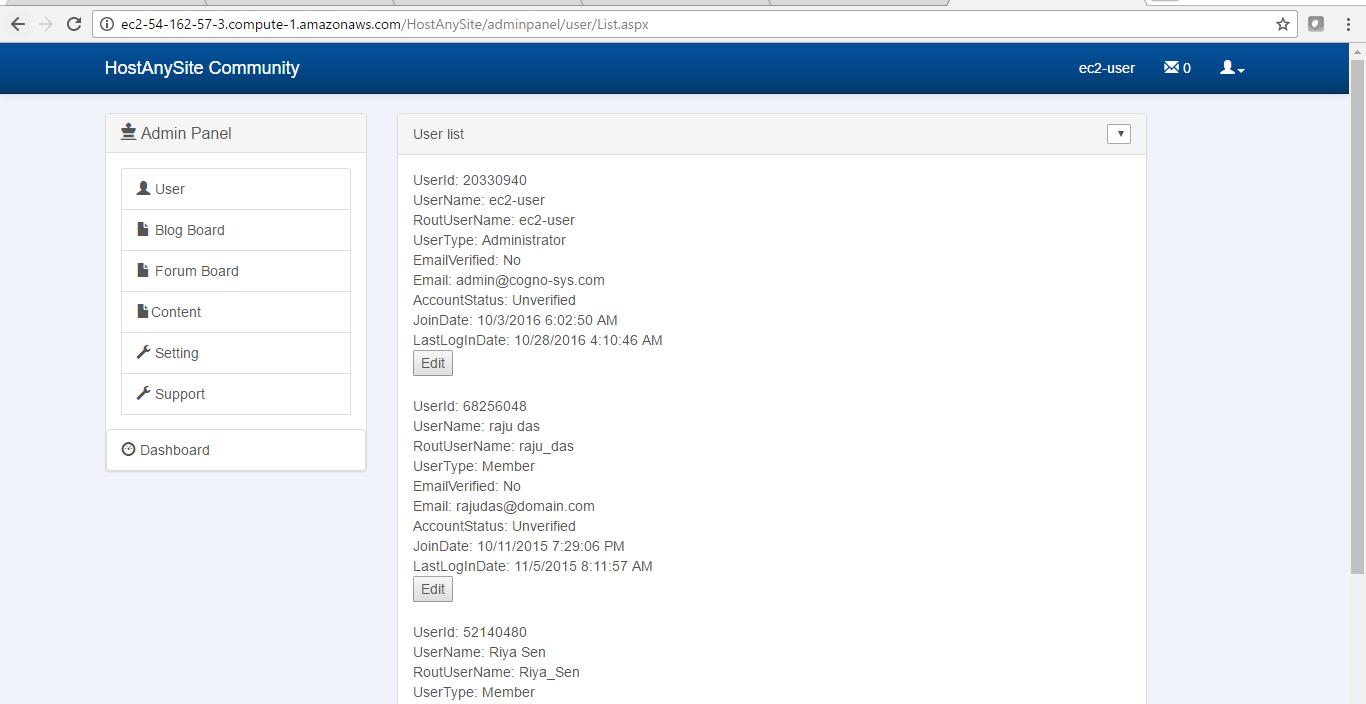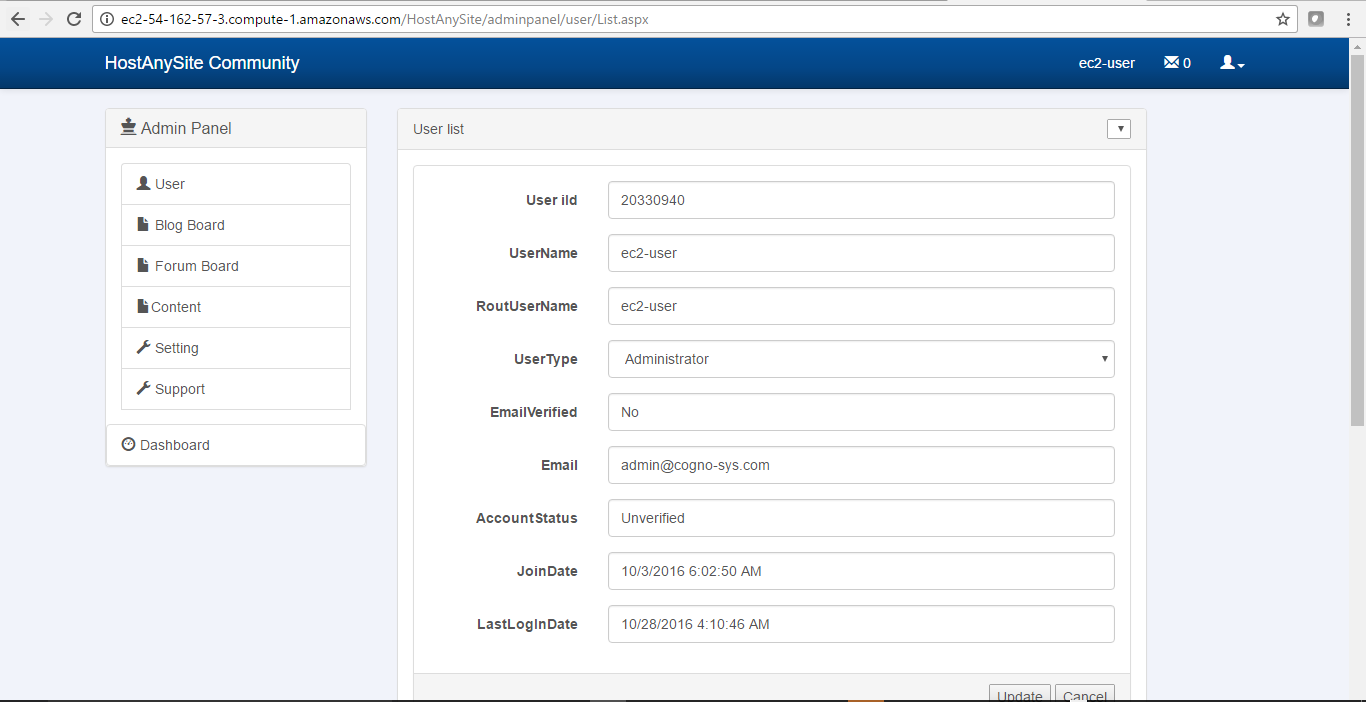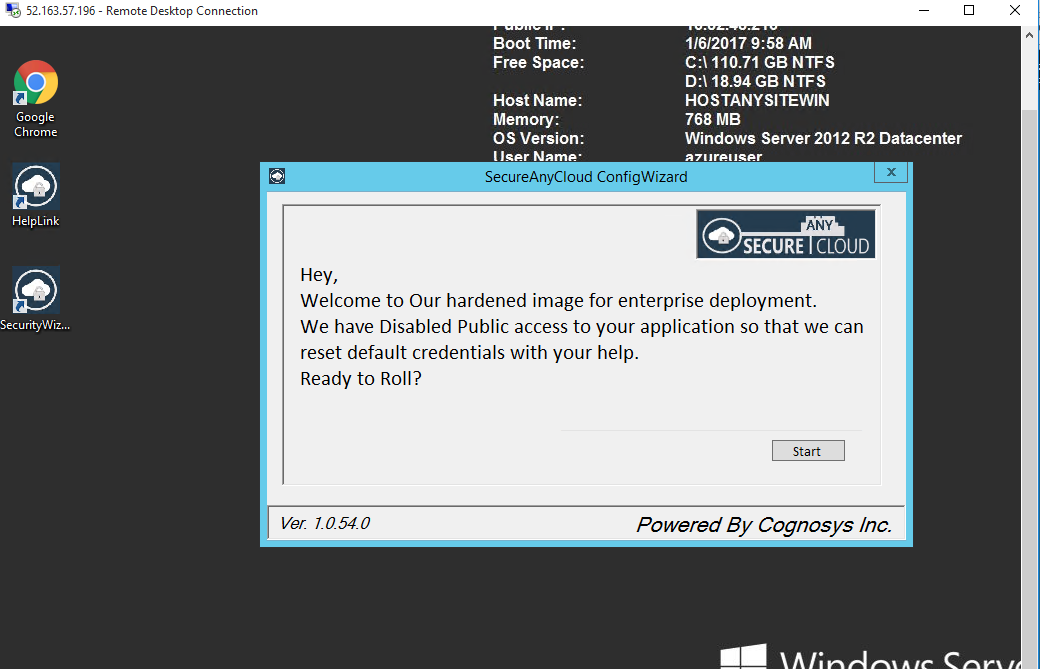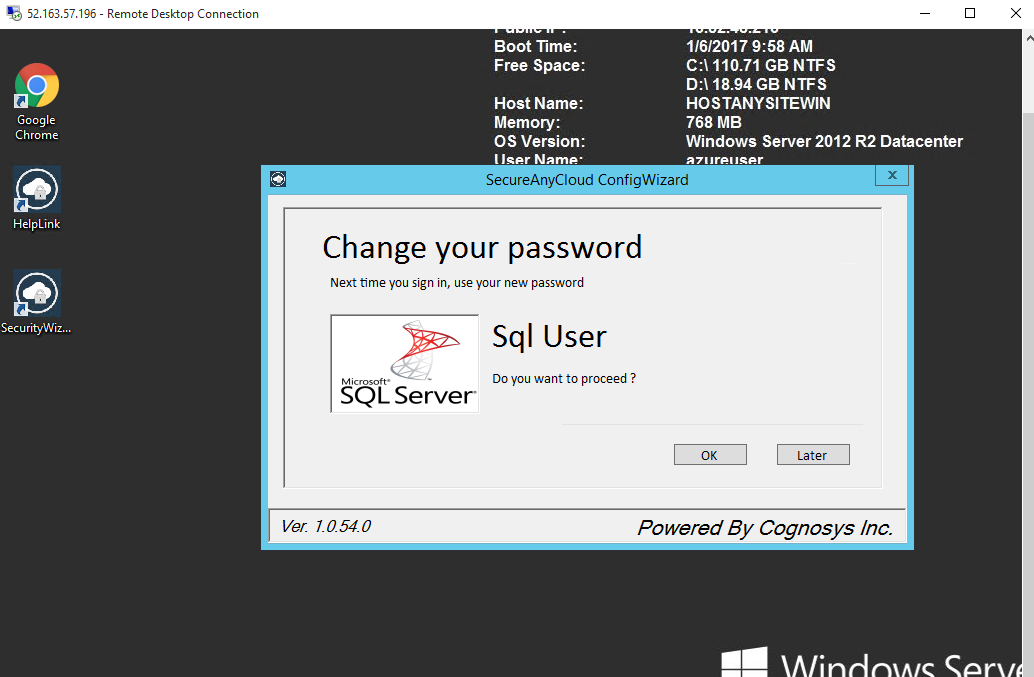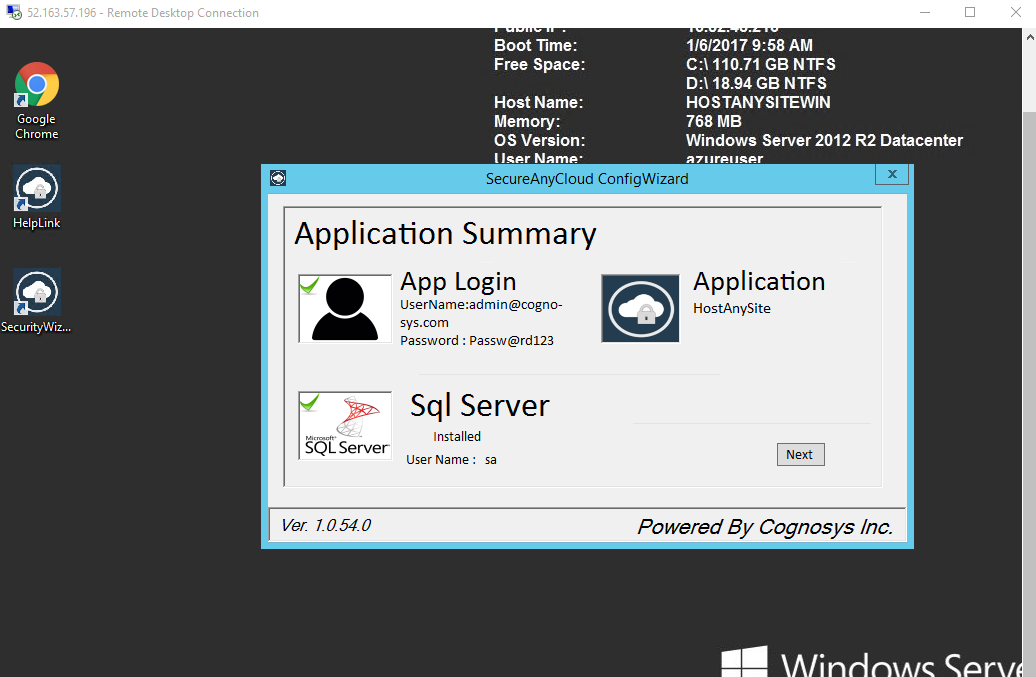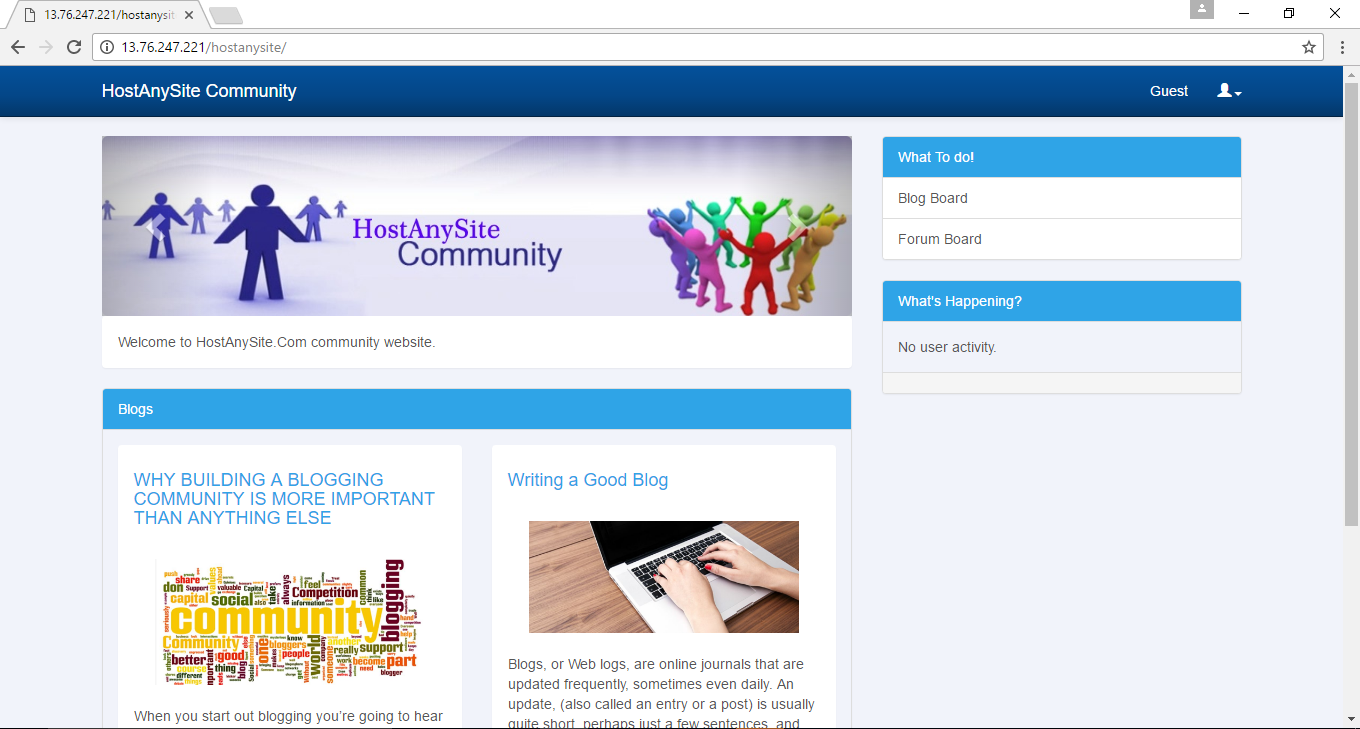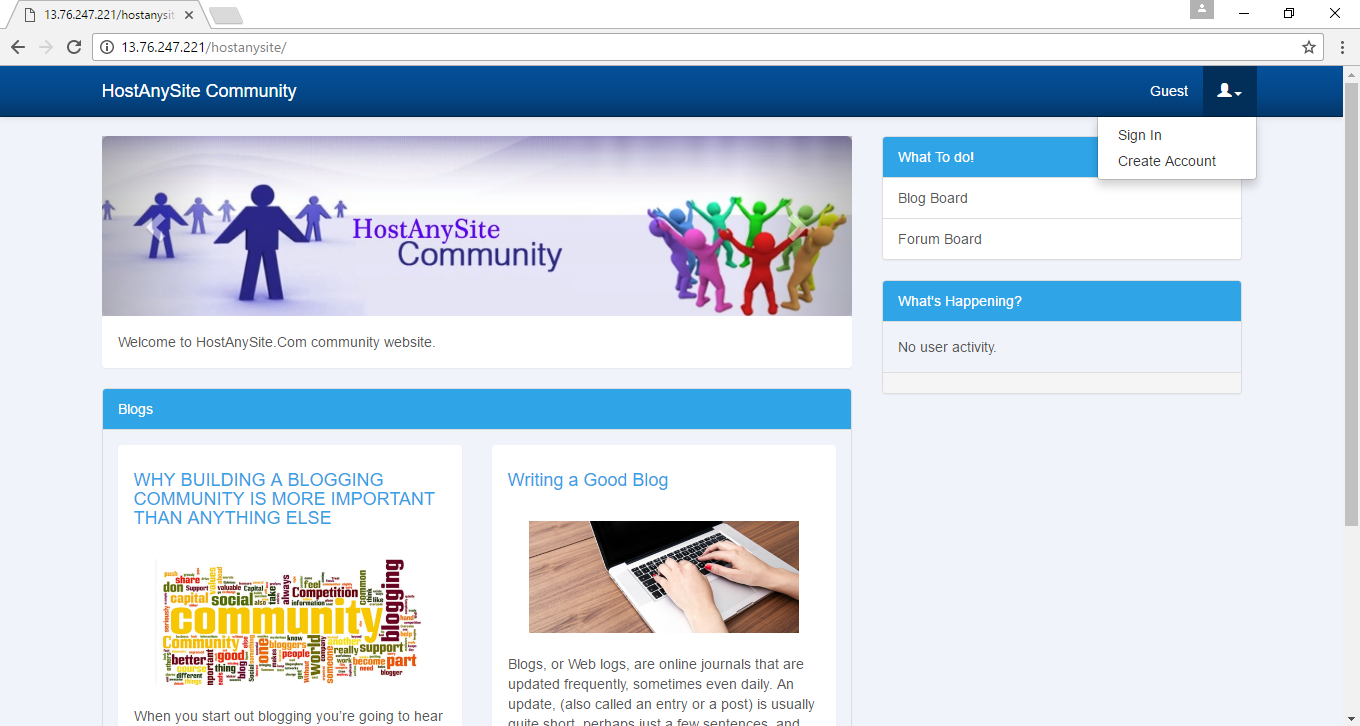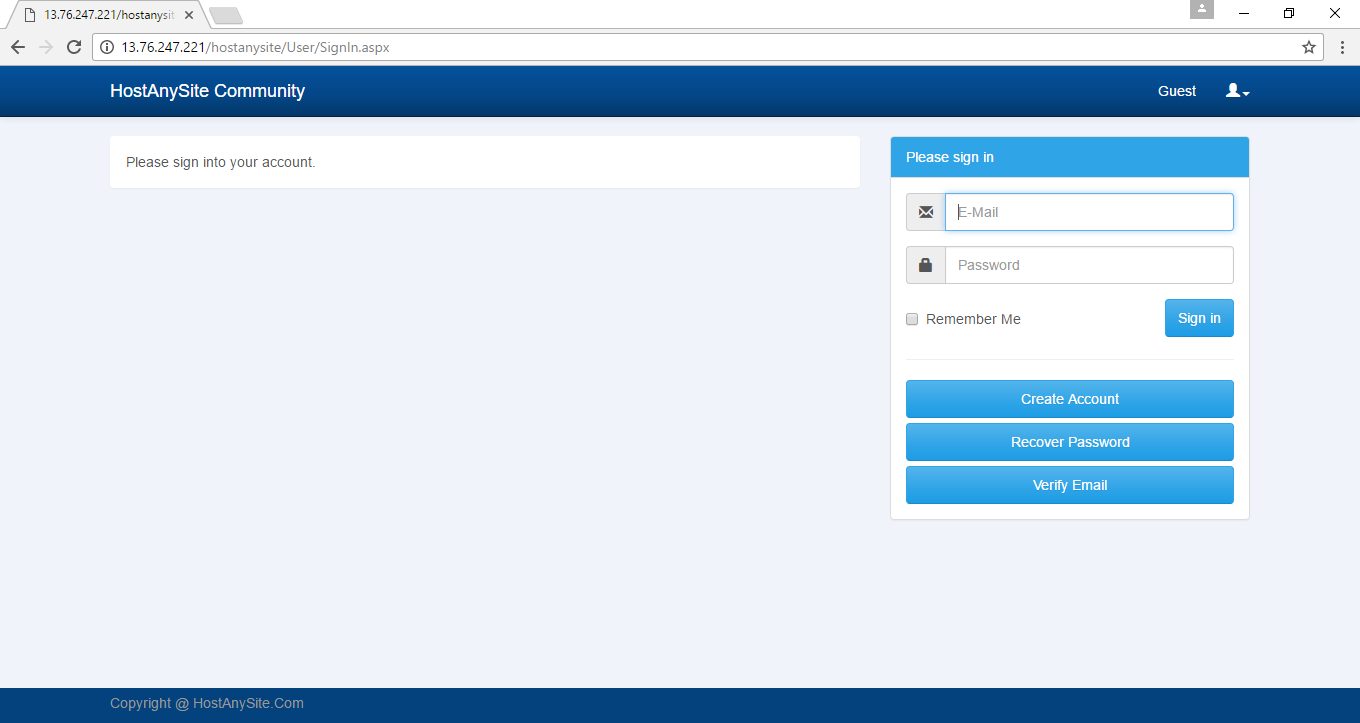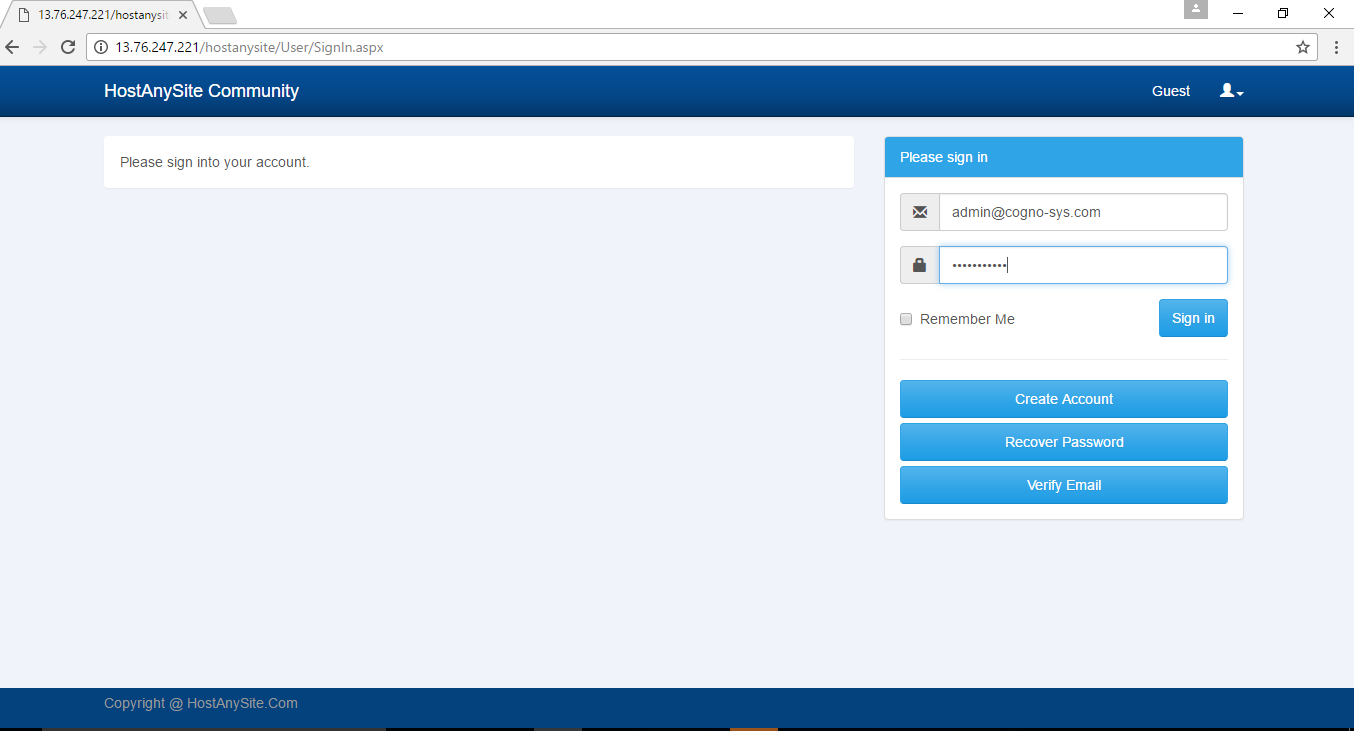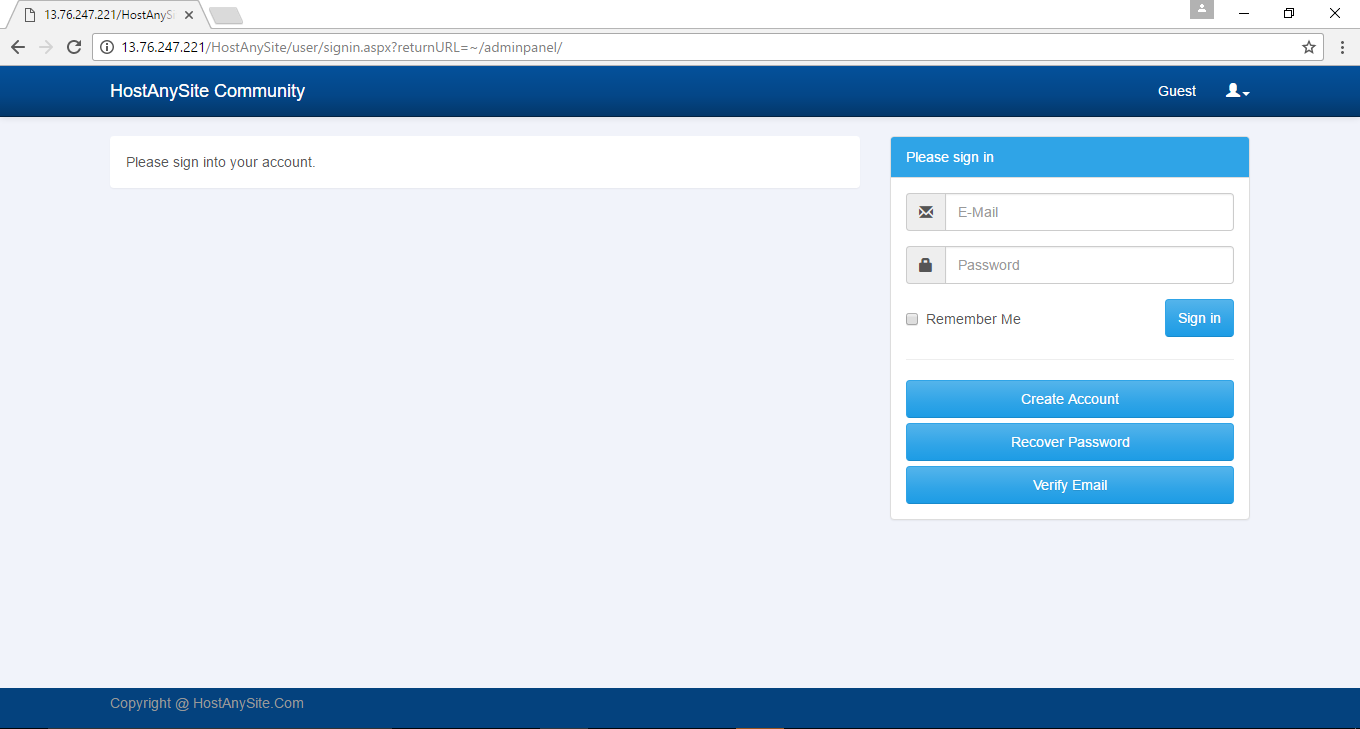1-click AWS Deployment 1-click Azure Deployment 1-click Google Deployment
Overview
HostAnySite is a fully customizable Blogging and Forum site. A solution with comprehensive features that is easy to use for new Users, yet powerful enough for the most demanding forum application.
HostAnySite on Cloud runs on Amazon Web Services (AWS) and Azure and is built to provide the source code version of the script if you want, HostAnySite on Cloud can provide customized version of HostAnySite forum script.
HostAnySite is owned by HostAnySite (http://hostanysite.com/) and they own all related trademarks and IP rights for this software.
Cognosys provides hardened and ready to run images of HostAnySite on all public cloud i.e. AWS marketplace and Azure.
Secured Hostanysite on Windows 2012 R2
HostAnySite on Cloud for AWS-Windows
HostAnySite on Cloud for Azure-Windows

Features
Major Features of HostAnySite
- Forum
- User Management & User Profile
- Content management system Build With asp.net 4.0
- MS-SQL 2008
- Free source code.
AWS
Installation Instructions For Windows
Step 1) RDP Connection: To connect to the deployed instance, Please follow Instructions to Connect to Windows instance on AWS Cloud
1) Connect to virtual machine using following RDP credentials :
- Hostname: PublicDNS / IP of machine
- Port : 3389
Username: To connect to the operating system, use RDP and the username is Administrator.
Password : Please Click here to know how to get password .
Step 2) Database Login Details :
- SQL Username: sa
- SQL Password : Passw@rd123
Step 3) Application URL: Access the application via a browser at http://PublicDNS/hostanysite
- User Name: admin@cogno-sys.com
- Password: Passw@rd123
Step 4)Steps to access the Admin Panel:
- To login to HostAnySite Administrative Panel, you need
to open your browser and navigate to http://PublicDNS/hostanysite/adminpanel/ - Enter username and password in the given fields and click on the“Login” button to access the Admin Panel.
- After successful login to the Admin Panel, you will get access to HostAnySite Application.
Step 5) Other Information:
1.Default installation path: will be in your web root folder “C:\inetpub\wwwroot\hostanysite”
2.Default ports:
- Windows Machines: RDP Port – 3389
- Http: 80
- Https: 443
- Sql ports: By default, these are not open on Public Endpoints. Internally Sql :1433
Configure custom inbound and outbound rules using this link
AWS Step By Step Screenshots
Azure
Installation Instructions for Windows
Note : How to find PublicDNS in Azure
Step1 ) RDP Connection: To connect to the deployed instance, Please follow Instructions to Connect to Windows instance on Azure Cloud
1) Connect to virtual machine using following RDP credentials :
- Hostname: PublicDNS / IP of machine
- Port : 3389
Username: Your chosen username when you created the machine ( For example: Azureuser)
Password : Your Chosen Password when you created the machine ( How to reset the password if you do not remember)
Step 2) Database Login Details :
- SQL Username : sa
- SQL Password : Passw@rd123
Step 3) Application URL: Access the application via a browser at http://PublicDNS/hostanysite
- User Name: admin@cogno-sys.com
- Password: Passw@rd123
Step 4) Other Information:
1.Default installation path: will be in your web root folder “C:\inetpub\wwwroot\hostanysite”
2.Default ports:
- Windows Machines: RDP Port – 3389
- Http: 80
- Https: 443
- Sql ports: By default, these are not open on Public Endpoints. Internally Sql server: 1433.
Configure custom inbound and outbound rules using this link
Azure Step by Step Screenshots
Installation Instructions For Windows
Step 1) VM Creation:
1.Click the Launch on Compute Engine button to choose the hardware and network settings.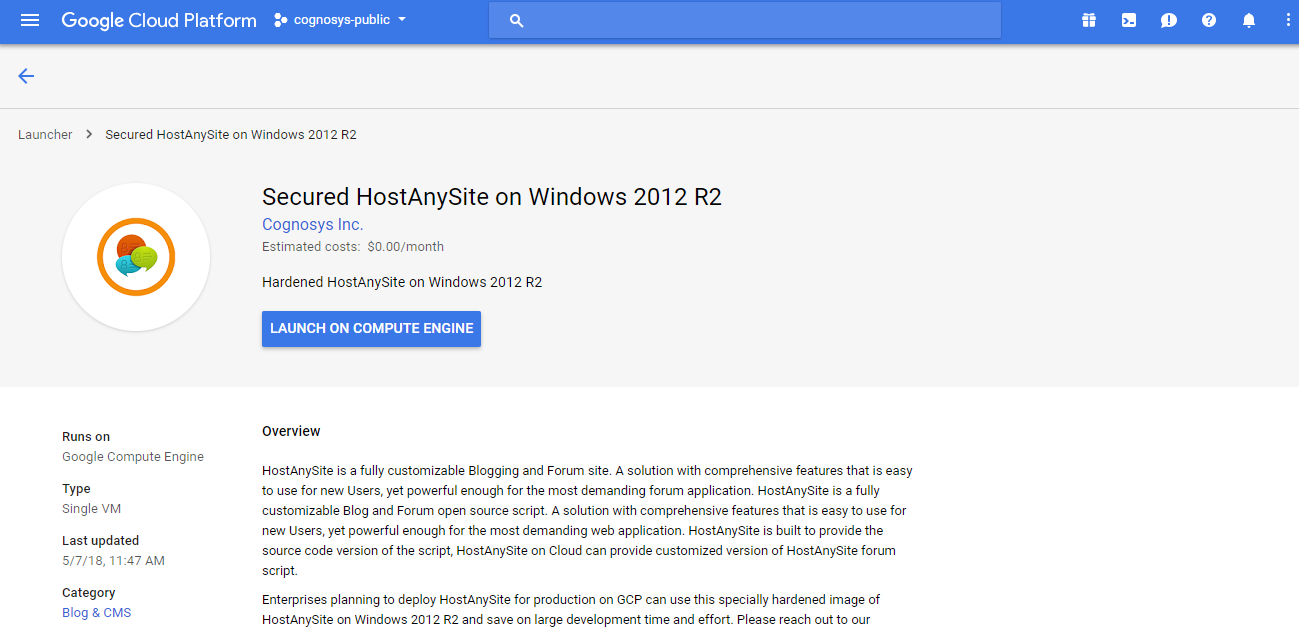
2.You can see at this page, an overview of Cognosys Image as well as some estimated costs of VM.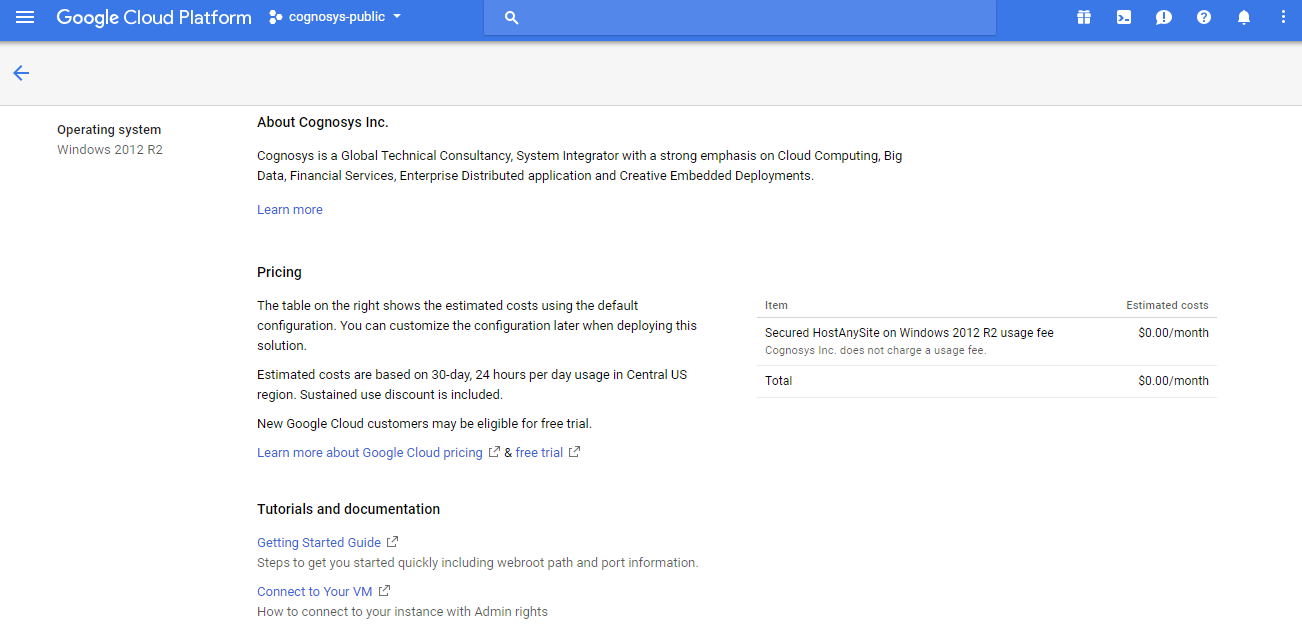
3.In the settings page, you can choose the number of CPUs and amount of RAM, the disk size and type etc.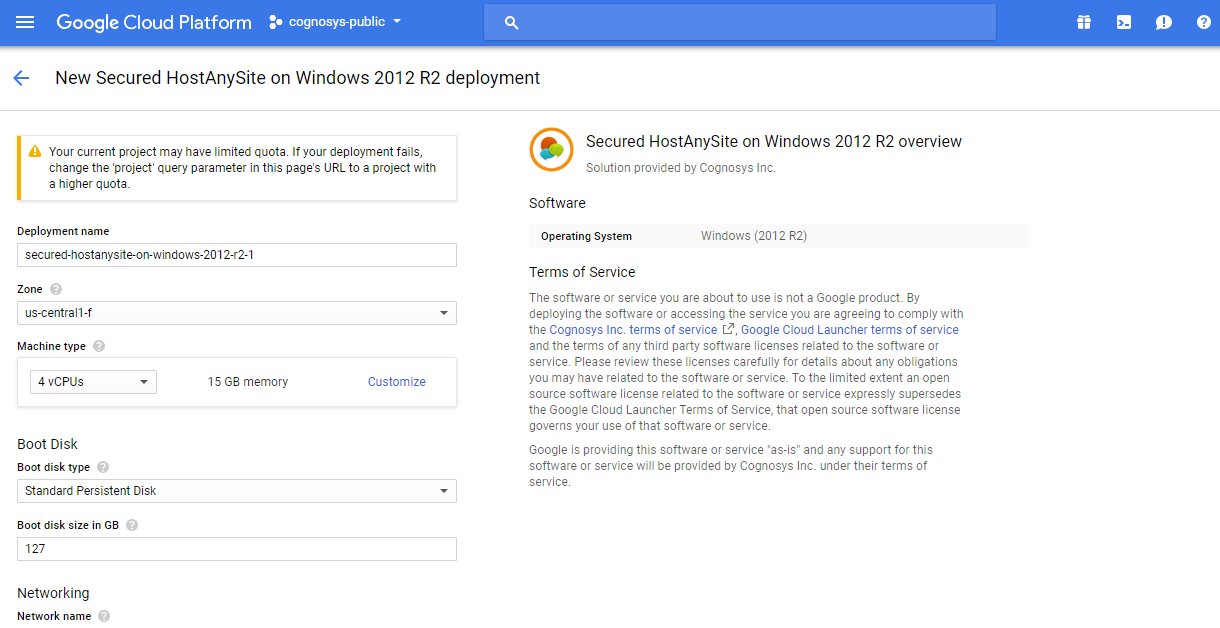
Step 2) RDP Connection: To initialize the DB Server connect to the deployed instance, Please follow Instructions to Connect to Windows instance on Google Cloud
Step 3) Database Login Details:
The below screen appears after successful deployment of the image.
For local MySQL root password, please use the temporary password generated automatically during image creation as shown above.
i) Please connect to Remote Desktop as given in step 2 to ensure stack is properly configured and DB is initialized.
ii) You can use MySQL server instance as localhost, username root and password as shown above.
If you have closed the deployment page you can also get the MySQL root password from VM Details “Custom metadata” Section
Videos
Secured Hostanysite on Windows 2012 R2
Host any website on Dropbox for free!



